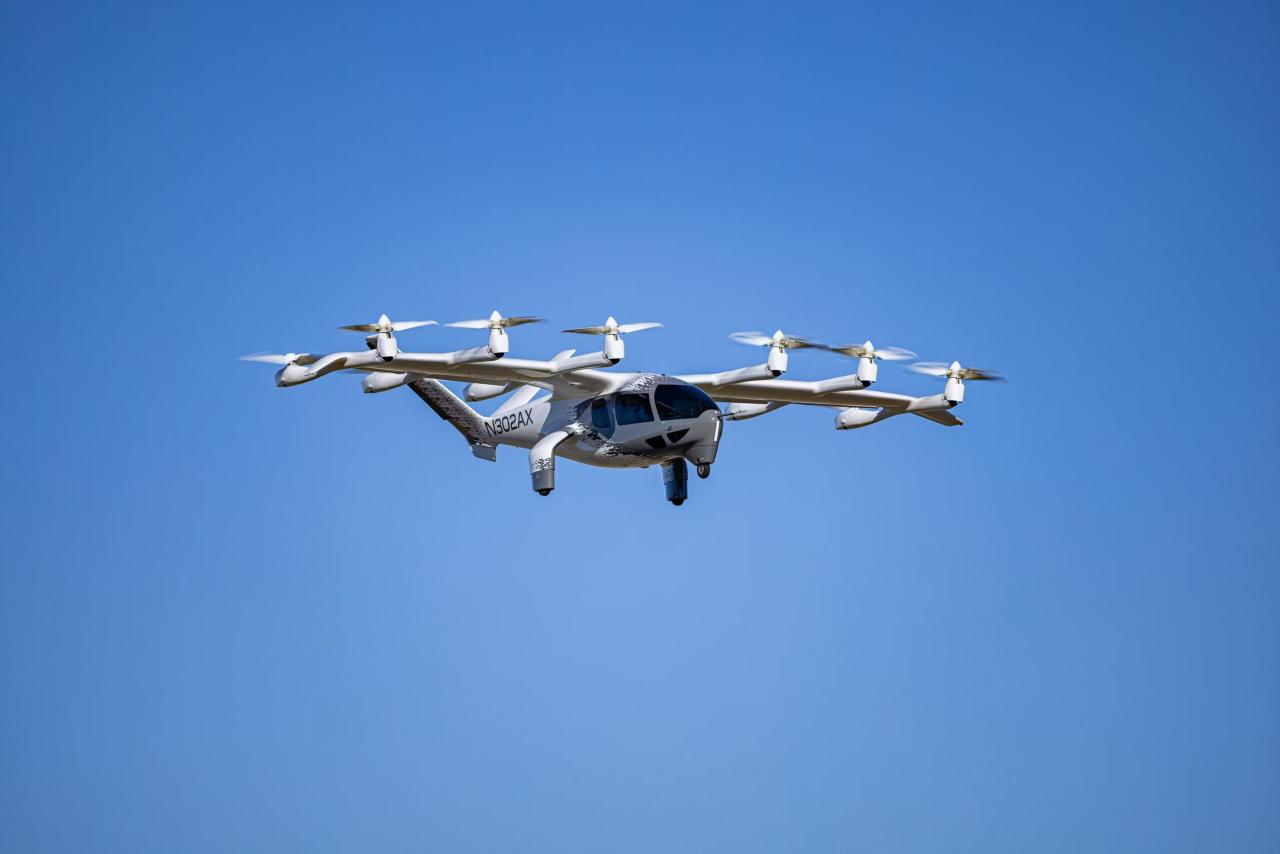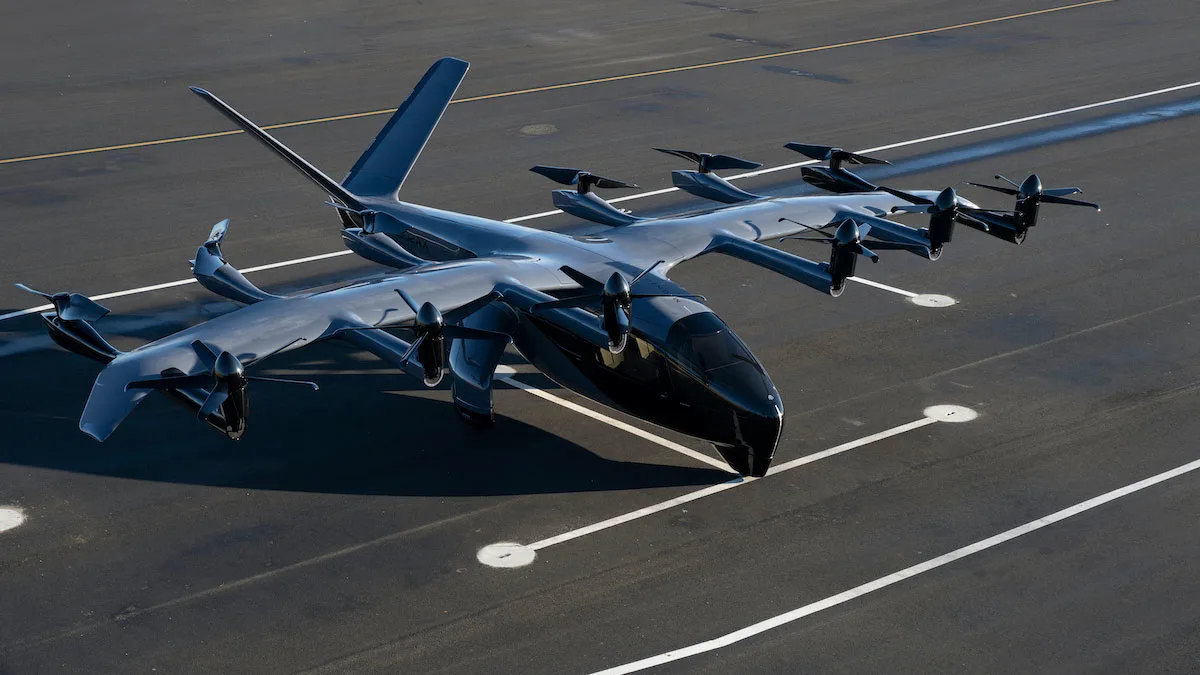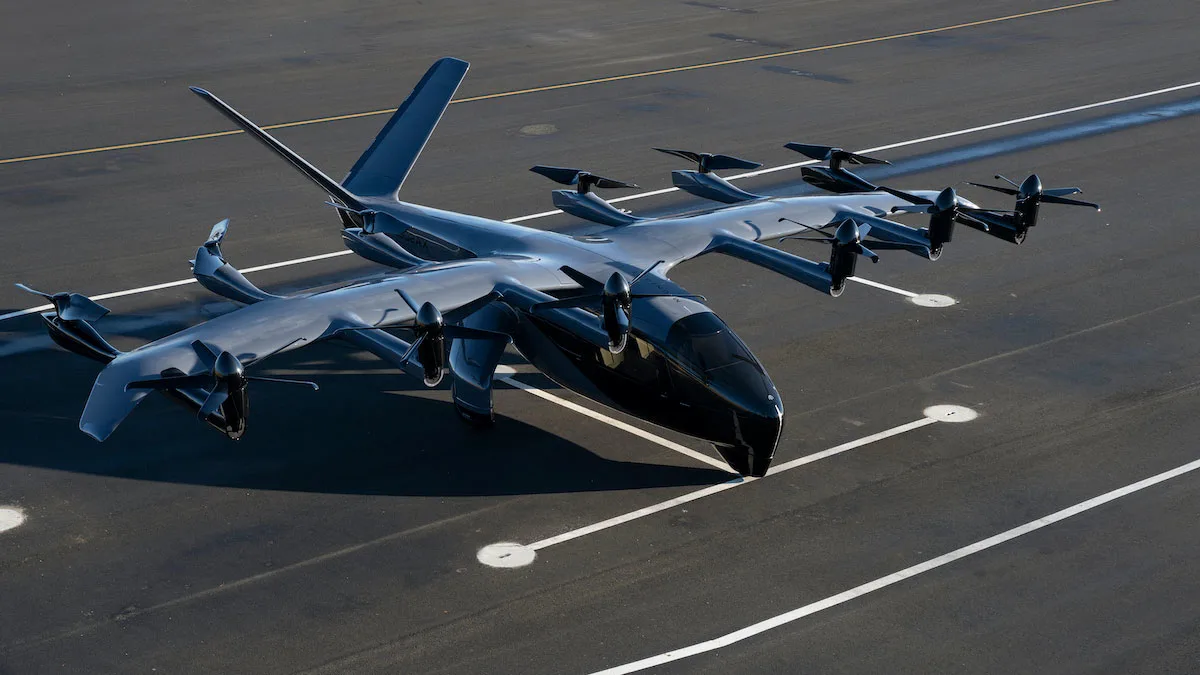Archer Aviation, a pioneering force in the urban air mobility (UAM) sector, is rapidly shaping the future of air travel. This exploration delves into the company’s history, innovative technology, market positioning, financial performance, regulatory landscape, and future potential, providing a comprehensive overview of this dynamic enterprise and its impact on the evolving aviation industry. We’ll examine its unique approach to electric vertical takeoff and landing (eVTOL) aircraft and analyze its competitive standing within a rapidly growing market.
From its founding principles to its ambitious growth strategies, we will unpack the key elements that define Archer Aviation’s trajectory. We will also consider the challenges and opportunities it faces as it navigates the complex regulatory and technological landscape of the UAM market. This analysis aims to provide a balanced perspective on the company’s prospects and its potential to revolutionize urban transportation.
Archer Aviation Company Overview
Archer Aviation is a leading developer of electric vertical takeoff and landing (eVTOL) aircraft for the urban air mobility (UAM) market. Founded in 2018, the company has rapidly advanced its technology and secured significant investments, positioning itself as a key player in the burgeoning UAM sector.
Archer Aviation’s History and Evolution

Established in 2018, Archer Aviation quickly garnered attention for its ambitious vision of revolutionizing urban transportation. The company’s initial focus was on designing and developing a technologically advanced eVTOL aircraft. Through strategic partnerships and successful funding rounds, Archer has progressed from conceptual design to prototype development and testing, demonstrating significant progress in a relatively short timeframe.
Archer Aviation, a prominent player in the electric vertical takeoff and landing (eVTOL) aircraft sector, is developing innovative air taxi solutions. Their focus on speed and efficiency contrasts sharply with the more rudimentary technology found in the widely discussed shahed drone , highlighting the significant technological gap between military-grade and commercially viable aerial vehicles. Ultimately, Archer’s advancements represent a leap forward in safe and sustainable air travel.
Archer Aviation’s Mission and Corporate Goals
Archer Aviation’s mission is to develop and deploy a safe, sustainable, and efficient eVTOL aircraft to transform urban transportation. Their corporate goals include achieving commercialization of their aircraft, establishing a robust manufacturing and operational infrastructure, and building a leading position within the UAM market. This involves navigating regulatory complexities and establishing a strong brand identity associated with safety and innovation.
Archer Aviation’s Product Line and Services
Archer’s primary product is the Midnight eVTOL aircraft, designed for short-range, urban air travel. The company plans to offer air taxi services, initially targeting point-to-point transportation between urban centers. Future service expansion may include cargo delivery and other UAM applications.
Archer Aviation’s Target Market and Customer Base
Archer Aviation’s target market includes urban commuters, businesses requiring rapid point-to-point transportation, and potentially tourism operators. The initial customer base is likely to consist of affluent individuals and corporations willing to pay a premium for faster and more convenient travel options, gradually expanding to a broader customer base as the technology matures and costs decrease.
Archer Aviation’s Key Partnerships and Collaborations
Strategic partnerships are crucial for Archer Aviation’s success. The following table highlights key collaborations:
| Partner | Area of Collaboration | Partner | Area of Collaboration |
|---|---|---|---|
| Stellantis | Manufacturing and supply chain | United Airlines | Pre-orders and potential operational partnerships |
| (Add Partner 3) | (Add Area of Collaboration) | (Add Partner 4) | (Add Area of Collaboration) |
Archer Aviation’s Technology and Innovation
Archer Aviation’s technological advancements are central to its competitive position. The company employs cutting-edge design and engineering principles to create a safe, efficient, and environmentally friendly eVTOL aircraft.
Technological Advancements in Archer’s Aircraft
Archer’s Midnight aircraft utilizes distributed electric propulsion, meaning multiple smaller electric motors power individual rotors. This design enhances safety and redundancy, as the failure of one motor does not necessarily ground the aircraft. Advanced battery technology, crucial for extended flight times, is also a key technological element. Furthermore, sophisticated flight control systems and autonomous flight capabilities are being integrated.
Design and Engineering Principles
The design emphasizes modularity for easier maintenance and repair, a key consideration for a commercial fleet. Lightweight materials are used to maximize efficiency and range. Aerodynamic design principles minimize drag and optimize lift, enhancing performance. Safety features are incorporated throughout the design process, including redundant systems and advanced safety protocols.
Comparison to Competitors
Compared to competitors like Joby Aviation and Vertical Aerospace, Archer’s approach may emphasize a more modular and potentially less expensive design, focusing on quicker time-to-market. However, this may mean some trade-offs in terms of overall range or speed compared to competitors with different technological approaches. Direct comparisons require detailed specifications which are often confidential and evolving.
Key Features and Specifications of Archer’s Aircraft

The Midnight aircraft boasts a targeted range of around 60 miles on a single charge and a top speed of over 150 mph (approximate figures subject to change). Key features include its compact design suitable for urban environments, its distributed electric propulsion system, and its advanced flight control systems. Specific details are subject to ongoing development and are often kept confidential due to competitive reasons.
Advantages and Disadvantages of Archer’s Technology
- Advantages: Modular design for easier maintenance, distributed propulsion for enhanced safety, relatively quicker time-to-market potential.
- Disadvantages: Potentially shorter range compared to some competitors, reliance on battery technology advancements for improved performance.
Market Position and Competitive Landscape
Archer Aviation operates within a rapidly evolving and competitive urban air mobility (UAM) market. Understanding its position relative to key competitors is essential to assessing its prospects.
Archer Aviation’s Position in the UAM Market
Archer Aviation is positioned as a leading contender in the race to commercialize eVTOL aircraft for urban air travel. The company’s focus on a relatively simpler and potentially more cost-effective design strategy may allow it to achieve quicker market entry. However, success hinges on overcoming regulatory hurdles and securing sufficient market share in a competitive landscape.
Archer Aviation’s Primary Competitors
Key competitors include Joby Aviation, Vertical Aerospace, and others developing eVTOL aircraft for similar applications. These companies vary in their technological approaches, business models, and overall strategic goals.
Comparison of Business Models
Archer Aviation’s business model centers on developing and deploying its own eVTOL aircraft and offering air taxi services directly or through partnerships. This contrasts with some competitors who might focus primarily on aircraft manufacturing and licensing or on developing specific technological components for the broader UAM industry.
Competitive Advantages and Disadvantages
Archer’s potential competitive advantages include its focus on a potentially less complex and more cost-effective design, allowing for faster commercialization. However, potential disadvantages include the possibility of a shorter range compared to some competitors and the reliance on rapid advancements in battery technology.
Comparison of Key Performance Indicators (KPIs)
A direct comparison of KPIs requires access to confidential data. However, a hypothetical comparison illustrates the types of metrics that would be relevant:
| KPI | Archer Aviation (Hypothetical) | Major Competitor (Hypothetical) |
|---|---|---|
| Aircraft Range (miles) | 60 | 80 |
| Projected Market Share (2028) | 5% | 7% |
Financial Performance and Investment
Archer Aviation’s financial performance and investment history are crucial indicators of its viability and future potential. Detailed financial data is often confidential and subject to change.
Financial Performance, Archer aviation
Archer Aviation’s financial performance is characterized by significant investments in research and development, leading to operating losses in its early stages. Revenue generation is expected to begin upon commercialization of its aircraft and the launch of its air taxi services. Precise revenue and expense figures are generally not publicly available, especially during pre-commercialization phases.
Funding Rounds and Investor Relations
Archer Aviation has secured substantial funding through various rounds of investment, attracting significant capital from both private investors and strategic partners. Investor relations are actively managed to maintain positive relationships with stakeholders and secure continued financial support for its growth plans.
Financial Projections and Growth Plans
Archer Aviation’s financial projections typically involve ambitious growth targets, reflecting its expectations for significant market penetration in the UAM sector. These projections are based on assumptions regarding market demand, regulatory approvals, and successful operational execution. Specific financial projections are generally not publicly released in detail.
Financial Risks and Opportunities
Key financial risks include potential delays in commercialization, competition from established players and new entrants, and the need for continued substantial funding. Opportunities include significant potential market growth in the UAM sector and the possibility of establishing a leading position in the industry.
Timeline of Major Funding Milestones
A detailed timeline requires access to Archer Aviation’s private financial records. However, a generalized timeline would illustrate key periods of significant funding events.
- 2018-2019: Seed funding and initial investment rounds.
- 2020-2021: Series A, B, and potentially later funding rounds, marked by increasing investment amounts.
- 2022-Present: Further funding rounds and strategic partnerships potentially leading to additional capital infusions.
Regulatory and Legal Landscape
The regulatory environment significantly impacts Archer Aviation’s operations. Navigating this complex landscape is crucial for its success.
Archer Aviation, a prominent player in the advanced air mobility sector, is developing innovative electric vertical takeoff and landing (eVTOL) aircraft. The company’s focus on safety and efficiency contrasts sharply with the concerning proliferation of less sophisticated technologies, such as the shahed drone , which highlights the need for responsible development and deployment of drone technology. Archer’s commitment to rigorous standards ensures their aircraft offer a significantly higher level of safety and performance compared to such alternatives.
Regulatory Environment
Archer Aviation operates under a complex web of regulations governing aviation safety, environmental impact, and airspace management. These regulations vary across different jurisdictions and are constantly evolving. The company must adhere to stringent safety standards and obtain necessary certifications before commercial operations can begin.
Legal Challenges and Compliance Requirements
Archer Aviation faces legal challenges related to obtaining necessary certifications, ensuring compliance with evolving safety regulations, and protecting its intellectual property. Compliance requires significant investment in legal expertise and ongoing monitoring of regulatory changes.
Key Regulatory Bodies

Key regulatory bodies include the Federal Aviation Administration (FAA) in the United States and equivalent aviation authorities in other countries where Archer plans to operate. These bodies oversee safety certification, airspace management, and environmental regulations.
Compliance with Existing Regulations
Archer Aviation actively works to ensure its operations comply with all relevant regulations. This involves rigorous testing, meticulous documentation, and ongoing engagement with regulatory authorities. The company’s commitment to safety and compliance is paramount to gaining public trust and securing necessary approvals.
Potential Regulatory Hurdles
Potential regulatory hurdles include delays in obtaining necessary certifications, evolving safety standards, and potential changes in airspace management policies. These hurdles can impact timelines and costs associated with commercialization.
- Certification Delays: Unexpected delays in obtaining necessary safety certifications from regulatory bodies could significantly impact timelines and financial projections.
- Evolving Safety Standards: Changes in safety regulations could necessitate design modifications and additional testing, increasing costs and delaying commercialization.
- Airspace Management Restrictions: Restrictions on airspace usage or limitations on operational areas could limit the potential market reach of Archer’s services.
Future Outlook and Potential
Archer Aviation’s future outlook depends on several factors, including technological advancements, market adoption, and regulatory approvals. The company’s long-term vision involves a significant role in the transformation of urban transportation.
Future Growth and Expansion
Archer Aviation projects significant growth and expansion, anticipating a substantial increase in its fleet size and service areas as the UAM market matures. This expansion will depend on successful commercialization, positive customer reception, and strategic partnerships.
Challenges and Opportunities
Challenges include competition, technological hurdles, and regulatory complexities. Opportunities include significant market growth potential, the possibility of establishing a leading market position, and expansion into diverse UAM applications.
Long-Term Strategic Goals and Vision
Archer Aviation’s long-term strategic goals include becoming a leading provider of sustainable urban air mobility solutions. Its vision is to transform urban transportation by providing safe, efficient, and convenient air travel options.
Impact of Technological Advancements
Technological advancements in battery technology, autonomous flight systems, and other areas will significantly impact Archer Aviation’s future. These advancements could lead to increased range, improved safety, and reduced operating costs.
Projected Market Share
A visual representation of Archer Aviation’s projected market share over the next five years would show a gradual increase, starting from a relatively small percentage in the early years and steadily growing as the company gains market share and expands its operations. The projected growth would be contingent upon successful commercialization, strong customer demand, and effective competition management. The visualization would be a line graph showing an upward trend, potentially reaching a significant percentage by year five, but with the caveat that the actual market share is subject to many variables.
Archer Aviation’s journey represents a significant leap forward in urban air mobility. While challenges remain in terms of regulatory approvals, technological refinement, and market penetration, the company’s innovative approach and strong investor backing position it as a key player in the future of air travel. Its success hinges on the continued development of its eVTOL technology, effective navigation of the regulatory environment, and the successful execution of its commercialization strategy.
The coming years will be crucial in determining Archer Aviation’s ultimate impact on the landscape of urban transportation.
Key Questions Answered: Archer Aviation
What is Archer Aviation’s current market capitalization?
This fluctuates and should be checked on a reputable financial website for the most up-to-date information.
When is Archer Aviation expected to begin commercial operations?
Archer Aviation provides projected timelines, but these are subject to change due to regulatory approvals and other factors. Consult their investor relations materials for the most current projections.
What types of aircraft does Archer Aviation produce?
Currently, Archer Aviation focuses on the development and production of electric vertical takeoff and landing (eVTOL) aircraft designed for urban air mobility.
Where are Archer Aviation’s manufacturing facilities located?
Information on Archer Aviation’s manufacturing locations can be found on their official website and in their investor relations materials.
